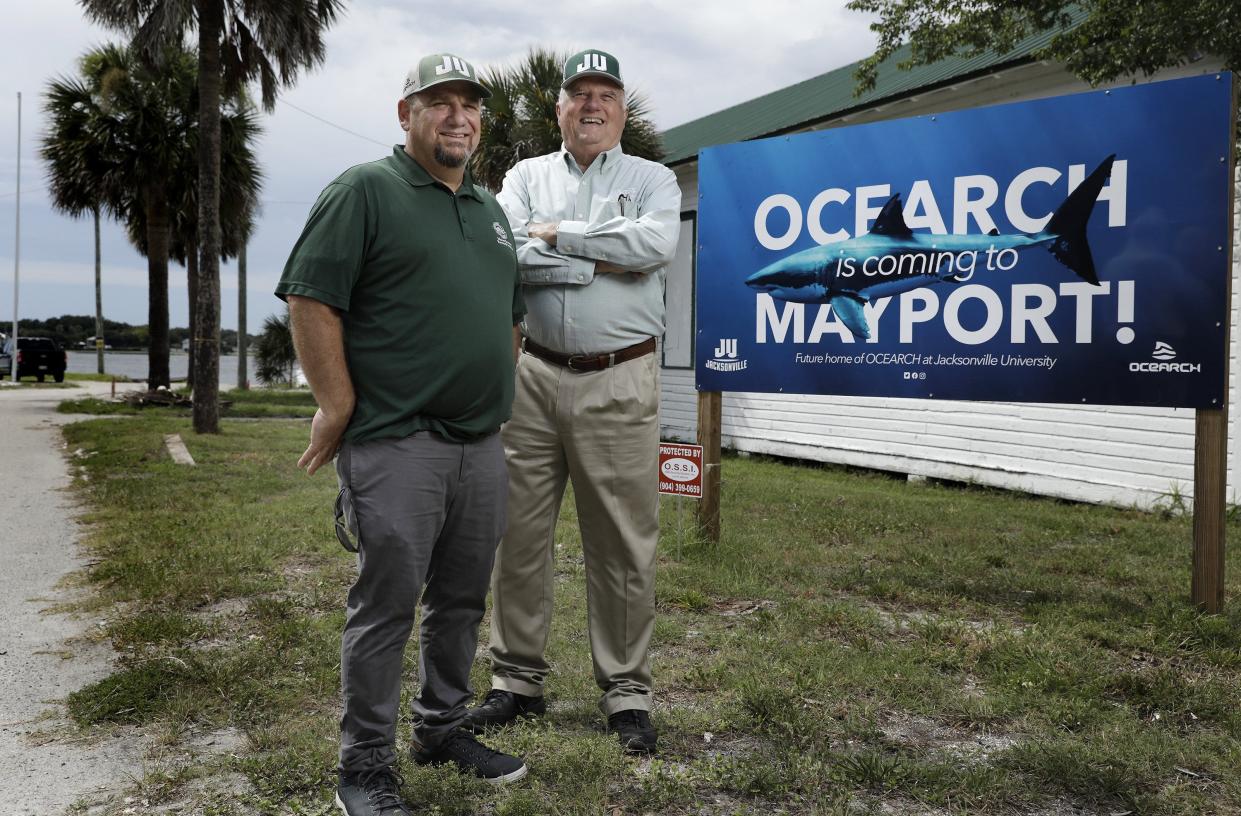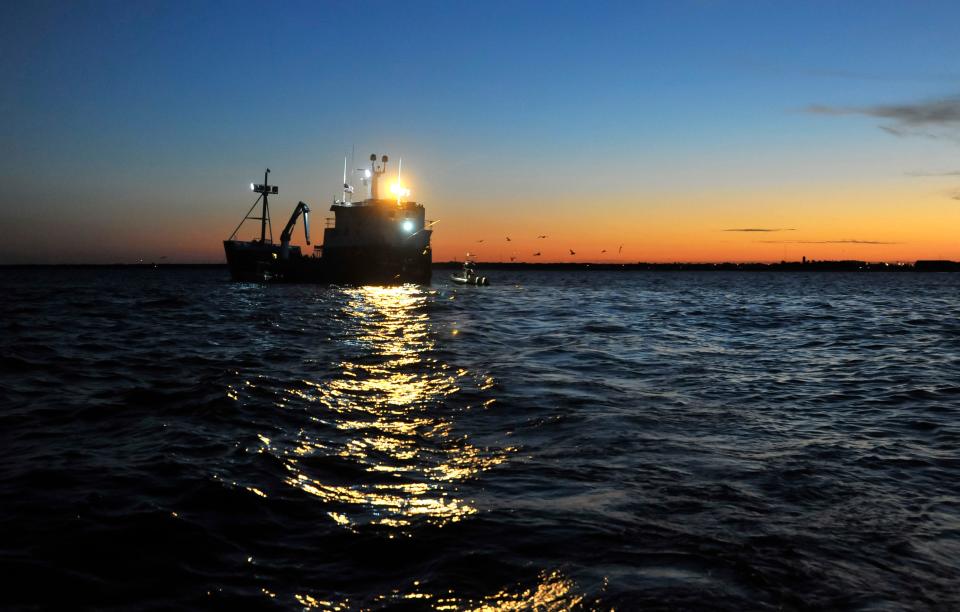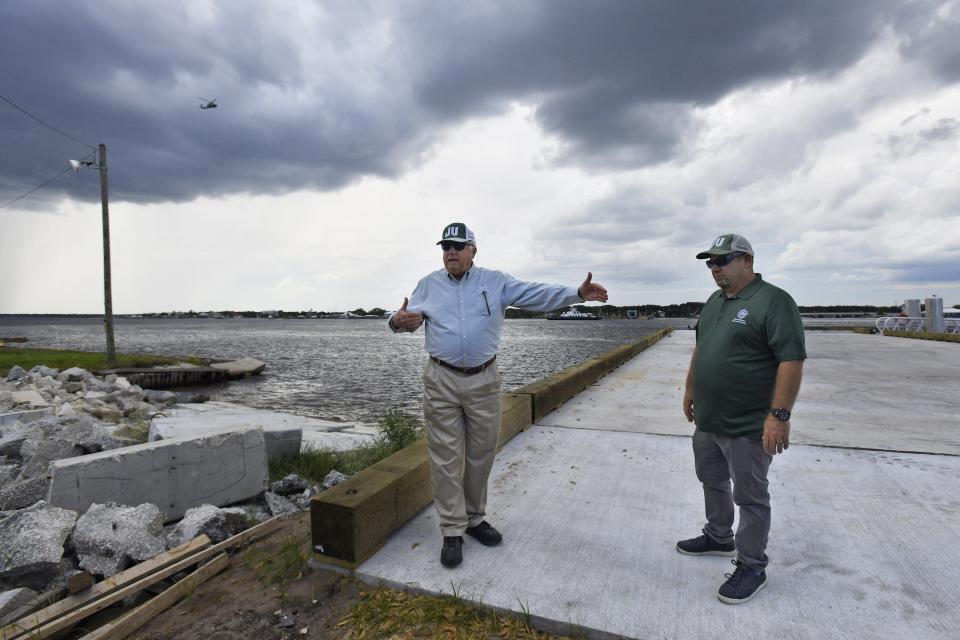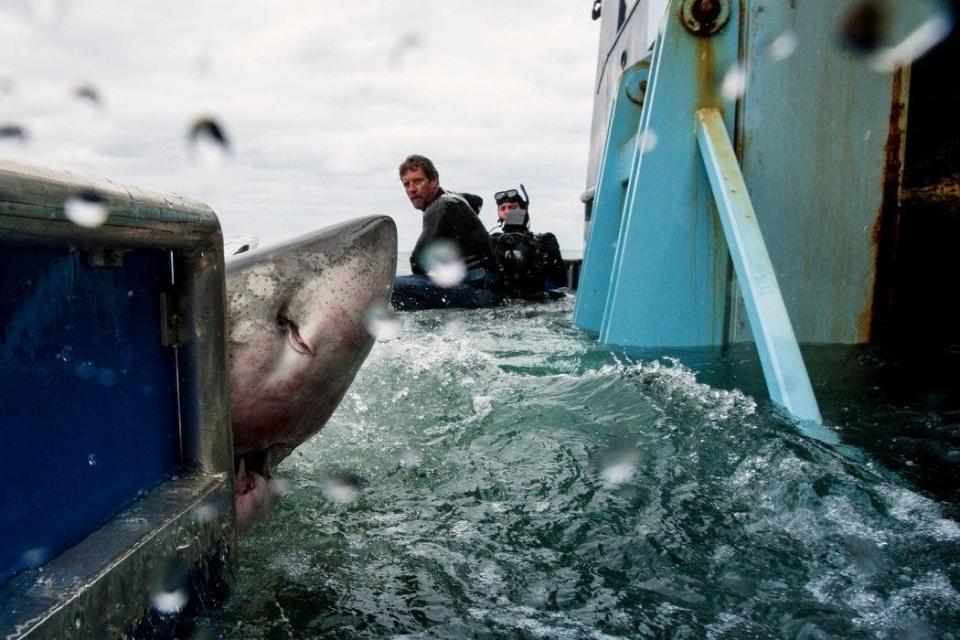With Ocearch move to Mayport, it'll be Shark Week all year long in Jacksonville

Mayport Village, battered by a decline in its historic fishing and shrimping industry, is showing signs of new life: There are new mixed-use retail and commercial development along its main street, Ocean Street, and new houses are popping up along the narrow streets that branch off from there.
Expect even more dramatic change within a couple of years as Ocearch, the popular and intrepid shark advocacy group, builds what it calls its "global headquarters" on Ocean Street, a little to the south of that recently renovated waterfront institution, Singleton's Seafood Shack.
Designs are in the early phase, but plans call for a visitors and education center, lodging for visiting scientists, laboratories and a boat repair facility. The group's flagship vessel, a 126-foot steel-hulled boat that once fished the stormy waters off Alaska, will have its home port there, and smaller research vessels could also make the move.
It's expected to welcome the public — locals, school groups and tourists — along with students from Jacksonville University, which in 2017 entered into a partnership with Ocearch.
The tentative date for opening the first phase of the project is December 2025, said Quinton White, head of the school's Marine Science Research Institute.
Partnership: JU teams up with shark tracking advocacy group Ocearch
What they've learned: Unlocking the mysteries of the great white shark
Possibilities are still being kicked around. There's this idea, offered by Bryan Franks, a shark expert at JU and a lead scientist for Ocearch.
"I really want to see some shark pens out here to keep small sharks we can do research on," he said. "The public can come and see."
It's a possibility.
'A mini Woods Hole'
Done first are the $6 million concrete docks that have been built by the city of Jacksonville, where city officials have said Ocearch would bring attention and visitors to Mayport, whose economic woes have left big sections of the waterfront vacant.
Then there's the recent announcement that $5 million for the Ocearch research facility has been included in the next state budget ($7 million was turned down last year).
Both those moves are huge, said Chris Fischer, founder of Ocearch.
“It’s the first time we’ll have a global headquarters. We’ve been wandering around the ocean for 20 years," Fischer said.
He believes the project will be transformative for Ocearch, JU and Mayport Village.
“I’m planning on this thing becoming a mini Woods Hole," he said, referring to the Massachusetts village that's become a center for oceanographic research.

That's an exciting prospect for Alyce Decker, chairwoman of the Mayport Waterfront Partnership, a nonprofit that works to revitalize the area.
"This means an internationally renowned, respected organization has chosen our section of Florida to be their headquarters," she said. "I think it will be great for the village."
Ocearch: Still hunting great white sharks off Jacksonville, through cold water, bad weather
The Waterfront Partnership works to preserve the old village's commercial waterfront and would like to see more commercial come back, she said, noting that progress seems to be made after Mayport has been "treading water" for so long.
"The village is seeing new construction, new folks moving in, land we're looking forward to creating a working waterfront," Decker said. "Lots of us remember what Mayport Village used to look like. I remember when you had visitors, everybody went out to dinner, to watch the sun go down, the boats go by. We see a rebirth and a resurrection of that coming back."
Shark trackers
Ocearch's scientists and crew members cover the ocean in a steel-hulled fishing vessel, pulling sharks aboard so scientists can conduct quick scientific tests — on fertility, eating habits, heart rate, etc. They also tag them with sensors that allow the sharks to be tracked via satellite pings or acoustic sensors.
That's led to a vast database of information on white shark movements and habits, including recent news that two male white sharks tagged off Georgia in December have been traveling together for more than 4,000 miles since then — the first evidence that white sharks perhaps aren't as solitary as long thought.
The group's shark tracker website has proven popular with a public that has long been fascinated with them. The nonprofit has been featured on "60 Minutes," other TV shows and in countless news articles, while its Twitter handle has more than 147,000 followers.
JU and Ocearch engage in open research and collaboration with numerous scientific groups, whose members are often on the shark-tracking boat. Fischer said scientists from 12 different Florida institutions are on Ocearch's scientific team, and the group also hosts scientists from out of state and overseas.
All that's designed to increase knowledge and raise awareness of sharks, the predator at the top of the ocean's food chain — and a vital link in the ocean’s ecosystem. If sharks are healthy, Fischer says, then the ocean itself is healthy.
He noted that despite some troubling trends — the plight of the endangered right whale for one — the oceans off the East Coast are showing clear signs of increasing marine life, due to efforts by the states and the National Oceanic and Atmospheric Administration. That's something other countries can learn from, he said.
"We have re-wilded our ocean," Fischer said. "We can now take that message around the world: Look at what you can do in 30 years if you make a few key moves. We have proven you can bring an ocean back to life.”
The heart of Mayport
The Ocearch facility will take up about 2 acres in the heart of Mayport, part of a 7-acre property that the Jacksonville City Council agreed to take ownership of in 2018 after the Jacksonville Port Authority abandoned plans to build a giant cruise-ship terminal there. It's been largely abandoned since.
There are two old white clapboard buildings on the property but they don't figure in Ocearch's plans, said Franks and White. Those buildings might become a museum for Mayport's maritime history instead.

The group's focus will be on the dock and new buildings just to the north. Ocearch's flagship vessel, which now docks in Brunswick, Ga., when not on expeditions, will move to the end of the concrete dock, becoming a regular part of the village scenery.
River Life: Do sharks prowl the St. Johns?
White, who writes a monthly column for the Times-Union called "River Life," has been teaching at JU since 1976. The Ocearch development, he said, is an appealing prospect for JU and for him.
"I need to walk away, but hell, I don't want to. Part of my problem is, I'm still having a blast," he said. "I feel sorry for Bryan, because I don't quite go away."
Franks just smiled: "As I say to him, we're not letting him go."
Ocearch's celebrity sharks
Fischer traces Ocearch's relationship to Jacksonville to white shark Mary Lee, a 3,500-pound behemoth that created a stir after it was tracked into the surf zone off Jacksonville Beach on a cold night in January 2013. That led Fischer, from his home in the Rocky Mountains, to send out warnings on Facebook and make a 12:46 a.m. phone call to police in Jacksonville Beach.
That led to a quick Ocearch expedition to Jacksonville, where a couple of months later its crew caught, tagged and released another great white shark, Lydia (14 ½ feet, 2,000 pounds) within eyeshot of one of the area's premier surfing spots, the Poles near Naval Station Mayport Naval.

Mary Lee became a celebrity shark, followed closely online by thousands of followers, while Lydia made waves of her own as she ventured far east into the Atlantic, sending the British media into overdrive as they warned of the "sea monster" heading their way.
"It is feared the hungry creature will have easy pickings as a spring heatwave sends thousands of Brits flocking to the coast," the Daily Star warned, barely mentioning the part about Lydia still being more than 1,000 miles away.
Every move you make: Great white shark Katharine swims off Ponte Vedra; Europe prepares for arrival of Jacksonville's great white, Lydia
Fischer, a regular presence on TV, sees the interest generated by Ocearch as crucial to understanding and preserving the predator, for the sake of the ocean's health. Moving to Jacksonville, from where its ship can travel the world, he says, is a key part of that.
"Oh man, I’m dreaming big," he said. "We couldn’t do that on our own. We needed a home, and we needed a community. The community of Jacksonville, from the very first day that Mary Lee swam under the pier in 2013, the community said, 'OK, that’s great.' The way we were accepted, the way we were embraced, I don’t even know where we’d be going if it weren’t for Jacksonville and Jacksonville University.“
This article originally appeared on Florida Times-Union: Shark advocacy group Ocearch moving to Mayport in Jacksonville

